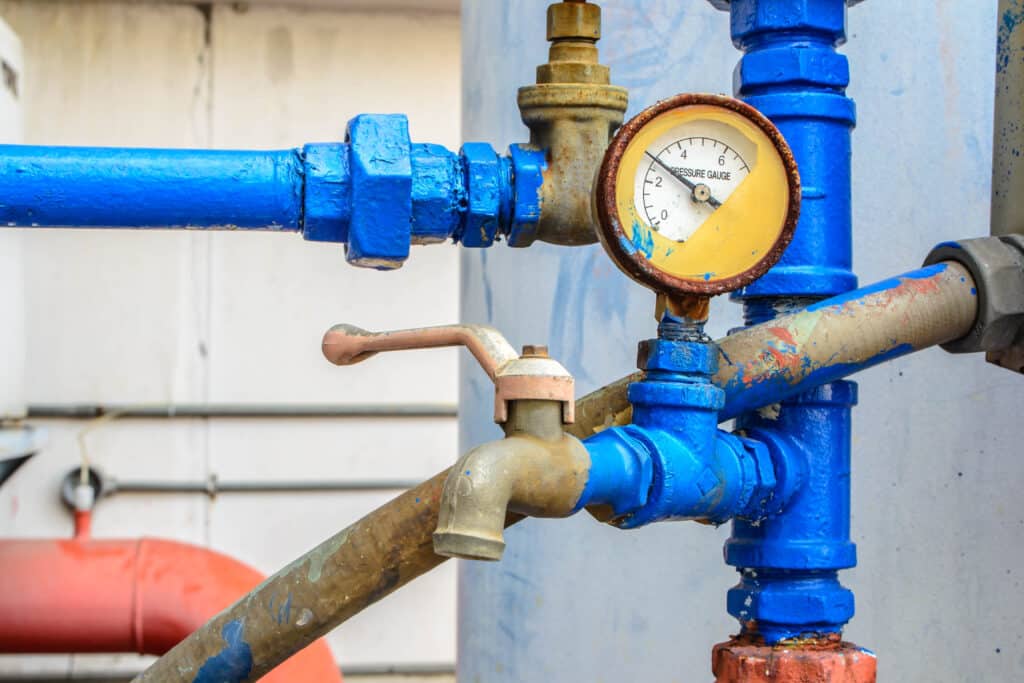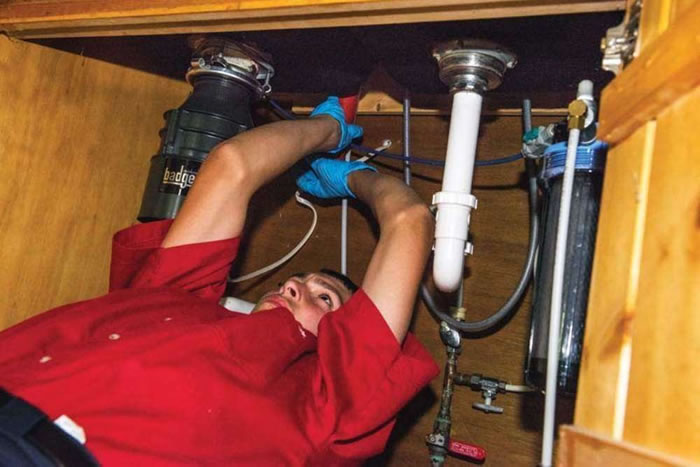Verified Approaches for Managing Low Water Pressure in Your Home
Verified Approaches for Managing Low Water Pressure in Your Home
Blog Article
Almost everyone may have their personal perception when it comes to 4 Ways to Troubleshoot Low Water Pressure.

Low water pressure in your house can be an aggravating problem, affecting everything from showering to washing dishes. If you're experiencing weak water circulation, there are numerous possible causes and services to check out. In this guide, we'll talk about typical reasons for low water stress and sensible steps to resolve the concern properly.
Introduction to Low Tide Pressure
Low tide pressure occurs when the flow of water from your faucets, showers, and various other components is weak than usual. This can make daily jobs a lot more difficult and less effective. Comprehending the sources of low tide pressure is crucial to locating the ideal solution.
Usual Reasons For Low Water Stress
Faulty Pressure Regulatory Authorities
Pressure regulatory authorities are responsible for keeping constant water stress in your home. If they malfunction, it can cause low tide stress or unequal circulation throughout your home.
Municipal Water Supply Issues
Occasionally, the problem exists outside your home. Municipal water system issues, such as main line leaks or upkeep work, can temporarily minimize water pressure in your area.
Pipeline Obstructions
In time, pipes can become clogged with mineral deposits, debris, or debris, restricting the flow of water. This is an usual issue in older homes with galvanized steel pipelines.
Rust
Deterioration within pipelines can cause leaks and lowered water stress. Rust accumulation can tighten water flow, particularly in maturing plumbing systems.
Just How to Diagnose Low Water Pressure
Evaluating Pipes
Examine visible pipelines for indicators of leakages, corrosion, or blockages. Focus on any kind of unusual sounds, such as banging or rattling pipes, which can show problems within the plumbing system.
Consulting with a Plumber
If you're not able to pinpoint the cause of low tide stress, consider employing a professional plumber to conduct a thorough examination. They can determine underlying problems and recommend ideal options.
Checking Taps and Components
Begin by checking the water pressure at various taps and fixtures throughout your home. If the problem is isolated to particular areas, it may indicate local problems.
DIY Solutions to Deal With Low Tide Pressure
Flushing Water Heater
Debris build-up in the water heater can restrict circulation and decrease effectiveness. Purging the storage tank occasionally aids eliminate sediment and preserve optimal efficiency.
Examining Pressure Regulatory Authority
Guarantee that the stress regulator is operating properly. Adjusting or replacing the regulatory authority can help bring back correct water pressure throughout your home.
Cleansing Aerators and Showerheads
Mineral deposits can build up in aerators and showerheads, minimizing water flow. Eliminate and clean these parts regularly to boost water pressure.
Cleaning Clogs in Water Lines
For minor obstructions, try utilizing a plumbing serpent or chemical drain cleaner to clear obstructions in pipes. Beware when making use of chemicals and comply with safety guidelines.
When to Call a Specialist Plumber
If do it yourself efforts fail to solve the issue or if you suspect considerable plumbing issues, it's finest to look for assistance from a certified plumber. They have the expertise and tools to deal with intricate concerns securely and effectively.
Preventive Measures to Maintain Water Pressure
Mounting a Pressure Booster
Consider setting up a stress booster pump to improve water pressure in areas with regularly reduced circulation. This can be especially valuable for multi-story homes or homes with high-demand components.
Monitoring Water Usage
Be mindful of water use habits and prevent ill-using the plumbing system. Straightforward changes, such as astonishing showers and laundry loads, can assist keep adequate water pressure.
Normal Maintenance
Arrange regular upkeep for your plumbing system to prevent issues such as rust, leaks, and blockages. Resolving small problems early can aid stay clear of even more significant repair work later on.
Conclusion
Managing low tide pressure can be frustrating, however identifying the underlying reasons and carrying out proper remedies can bring back optimum circulation throughout your home. Whether it's cleaning up aerators, checking pipelines, or speaking with a plumber, taking aggressive steps can ensure a constant supply of water for your everyday needs.
FOUR WAYS TO FIX LOW WATER PRESSURE NOW
Turning on a shower or faucet only to find the water comes out in a sad, slow drizzle is never a good feeling. How exactly are you supposed to wash a pan or take a quick shower when it takes 10 minutes just to rinse off a little soap? The good news is that when your water pressure is bad, there's always a cause: typically one that can be easily fixed. Here are some of the most common causes of low pressure and what you can do to fix the issue:
DEBRIS AND MINERAL DEPOSIT BUILDUPS
If you notice low water pressure from just one or two of the fixtures in your house, the problem likely has to do with debris buildup. Water is full of minerals and other debris, all of which can accumulate in your pipes and on your fixtures. This can cause a blockage that affects how much water flows through. To fix this, try filling a small plastic bag with white vinegar, and use a rubber band to hang it around your showerhead or faucet. Let the head of the fixture soak for a few hours, and the vinegar should loosen the deposits.
WATER LEAKS
Leaks are another common cause of low water pressure. If water is flowing out of your plumbing through a hole or crack before it can reach your fixture, the pressure coming out of the faucet or showerhead will be lower. A plumbing professional is your best bet for finding and repairing a leak in your water supply pipes.
Leaks are another common cause of low water pressure. If water is flowing out of your plumbing through a hole or crack before it can reach your fixture, the pressure coming out of the faucet or showerhead will be lower. A plumbing professional is your best bet for finding and repairing a leak in your water supply pipes.
A VALVE ISSUE
If you have low water pressure throughout your home, check your main shut-off valve to make sure it's completely open. You may also want to see if there's a pressure-reducing valve installed. If there is, have a plumber help you adjust the settings to get the pressure you're looking for.
OTHERS USING WATER
Believe it or not, your low water pressure could be caused by your neighbors. If you notice low pressure at certain times of day, it may be because you and the people living next to you have similar schedules - when everyone is showering at the same time, the pressure will be lower in every home. Low pressure throughout the neighborhood may also be caused by an issue with your municipal water supply. If that's the case, call the supplier to see if they're working on the issue.
https://www.rotorooter.com/blog/water-leaking/low-water-pressure-fixes/

I am very curious about Low Water Pressure in the House? and I hope you appreciated the new piece. Liked our write-up? Please quickly share it. Help someone else locate it. Thanks a lot for your time. Don't hesitate to come visit our website back soon.
Book Now! Report this page